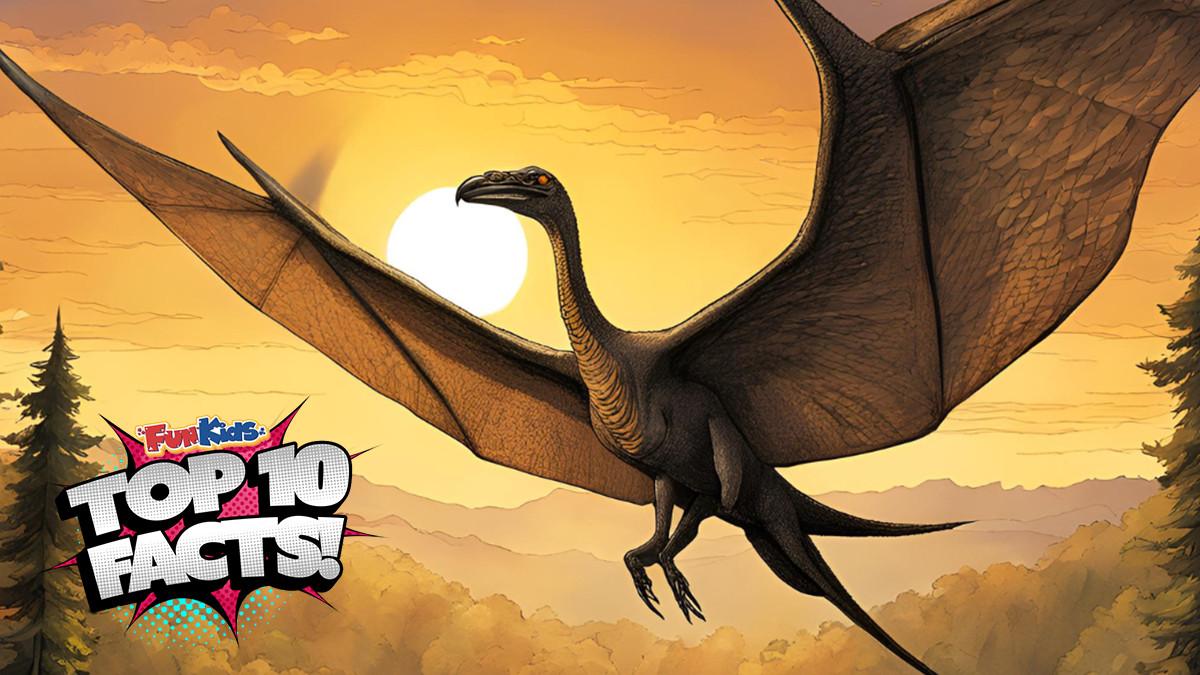Pterodactyls are some of the most iconic flying creatures from the prehistoric world, but did you know they aren’t technically dinosaurs? These incredible winged reptiles belong to a group called pterosaurs, and they soared through the skies during the age of the dinosaurs. Let’s take a look at 10 amazing facts about these fascinating flying creatures!
1. Pterodactyls weren’t dinosaurs.
Even though they lived alongside dinosaurs, pterodactyls were part of a separate group of reptiles called pterosaurs.
These creatures were the first vertebrates to evolve powered flight, making them the true rulers of the prehistoric skies.
So while we often associate them with dinosaurs, they’re actually flying reptiles.
2. Pterodactyls had wings made of skin, not feathers.
Unlike modern birds, pterodactyls didn’t have feathers.
Their wings were made of a membrane of skin, muscle, and other tissues stretching from their elongated fourth finger down to their bodies.
This unique wing structure helped them soar and glide through the air.
3. There’s more than one type of pterodactyl.
When people say “pterodactyl,” they’re often referring to the pterodactylus, one specific species of pterosaur.
However, there were many different types of pterosaurs.
Pterodactylus was smaller, while larger species like pteranodon had wingspans up to 7 metres (23 feet)!
Embed from Getty Images4. They had a lightweight skeleton.
Pterodactyls had light, hollow bones—just like modern birds.
This adaptation made them lightweight and able to fly more easily.
Despite their large wings, this skeletal structure kept them light enough to glide efficiently over long distances.
5. Some were the size of a plane, while others were as small as a crow.
The size of pterodactyls varied greatly.
While some, like pteranodon, had wingspans the size of small planes, about 6-7 metres (20-23 feet), smaller species like pterodactylus were about the size of modern birds, with a wingspan of around 1 metre (3 feet).
Embed from Getty Images6. They had sharp beaks and teeth.
Most pterodactyls had long, sharp beaks, perfect for catching fish or snapping up other small prey.
Some species, like pterodactylus, also had sharp teeth in their beaks, which helped them grab slippery fish or insects.
However, other species, like pteranodon, had no teeth at all!
7. They were skilled fishers.
Many pterodactyls lived near bodies of water and were skilled at catching fish.
With their long beaks and sharp teeth (in some species), they could snatch fish right out of the water.
They likely soared over lakes, rivers, and oceans, diving down to catch prey just like seabirds today.
Embed from Getty Images8. Pterodactyls had crests on their heads.
Many species of pterosaurs had crests on their heads, which could vary in shape and size.
The crests may have been used to attract mates or to help with balance while flying.
Pteranodon, for example, had a large backward-pointing crest, while pterodactylus had a smaller, flatter crest.
9. They lived during the late Jurassic to the late Cretaceous periods.
Pterodactyls lived during the same time as the dinosaurs, from the late Jurassic to the late Cretaceous periods, around 150 to 65 million years ago.
They were among the last of the pterosaurs before the mass extinction event that wiped out the dinosaurs and many other species.
Embed from Getty Images10. Pterodactyls are the ancestors of no modern animals.
Unlike dinosaurs, which evolved into birds, pterodactyls left no living descendants.
After the mass extinction event at the end of the Cretaceous period, pterosaurs, including pterodactyls, disappeared entirely.
However, their legacy lives on in the skies through their fascinating adaptations for flight.
Pterodactyls were truly remarkable creatures, combining the agility of modern birds with the unique features of reptiles. From their skin-covered wings to their toothy beaks, these flying reptiles ruled the skies of the prehistoric world. While they may not have been true dinosaurs, pterodactyls remain some of the most fascinating creatures from the age of the dinosaurs!
Add a commentTop 10 Facts
From the Tudors to rocks to fish, we have all the best facts right here!
More From Top 10 Facts



